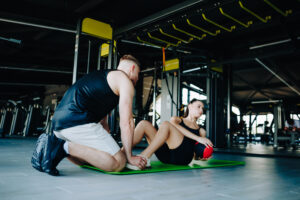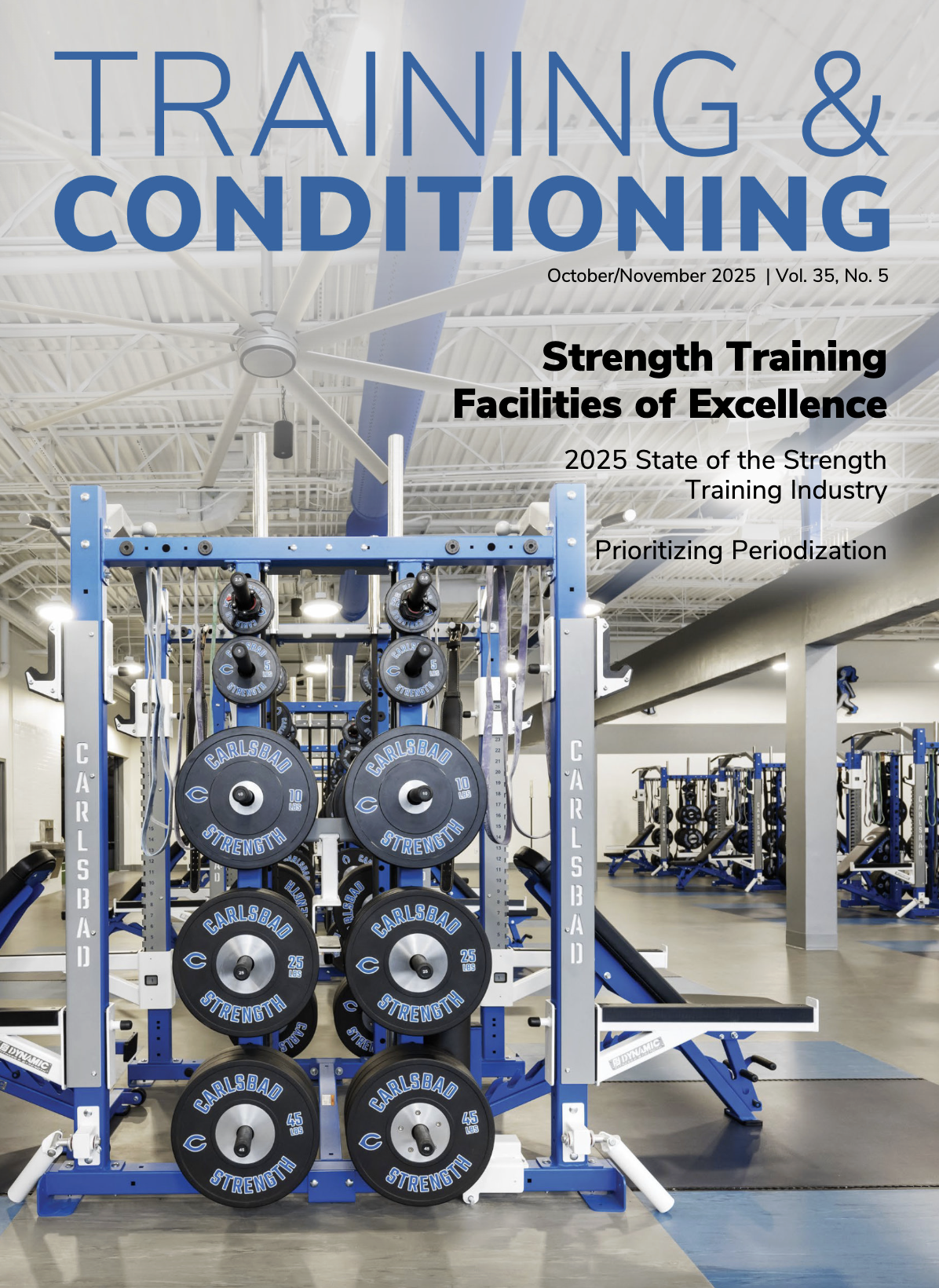Aug 11, 2025Navigating off-season training for student-athletes
For the sports athlete, the off-season is typically looked upon with a sense of relief from the grueling in-season practices and games.
Their training seasons are divided into different progressive programs based upon whether it may be pre-season, in-season (competition phase), post-season (active rest) or off-season (base training). It all accumulates, whether the athlete’s body is tired, exhausted, or worn down, those results can be felt physically, mentally, or a combination of both. After the in-season, the post-season, or active rest, comes next and is designed to recover from the previous sports season.
 During this training season, the athlete is to focus on the rehabilitation of injuries sustained in-season, and maintain an acceptable level of cardiovascular fitness and health. After this comes the off-season, where it is a whole different type of training, and correctly navigating can be the key and foremost ingredient to the upcoming pre- and in-season.
During this training season, the athlete is to focus on the rehabilitation of injuries sustained in-season, and maintain an acceptable level of cardiovascular fitness and health. After this comes the off-season, where it is a whole different type of training, and correctly navigating can be the key and foremost ingredient to the upcoming pre- and in-season.
When it comes to the off-season, what does an athlete focus on, what do they do, and/or do not do? What type of periodization models does one need to follow or avoid? How does one focus on recovery, stability, range of motion, volume, and intensity? Dialing in a properly detailed off-season program can set the athlete up for success come game time.
During the off-season, the athlete needs to establish their base level of fitness. It should be looked upon as where the real progress begins to take place. The fundamentals of fitness are the focus here, which encompasses a macro view. The programming here will include base training, which includes cardiovascular exercise, resistance and strength training, endurance, stability, flexibility and range of motion. The athlete has the freedom to focus on any of these or a little more on one than the other. All of this will aid in preventing injuries for the ensuing season. It comes down to a self-assessment of what their respective deficiencies were during the season and how to set up a program to capitalize on and make those elements their eventual strong points.
This is the time to devise and formulate programming, track development and/or progression, and communicate with their respective strength coach to create a sound vision going forward. The athlete needs to be appropriately trained for the upcoming season’s challenges.
“Sport Specificity”
The first thing in an assessment of the athlete is to determine the specific sport they partake in. For example, if the sport played is Mixed Martial Arts (MMA), we have to determine what type of sport it is and what key features the individual has to possess. MMA, a combat sport, will require physiological adaptations of strength, maximum strength, absolute strength and muscular endurance. The MMA practitioner also has to be able to be very explosive and have a significant amount of cardiovascular conditioning. Next, during the self-assessment, we have to see what benchmarks the athlete is attaining. What are his/her one repetition maximum (RM) on the bench press, deadlift, squat and power clean? The athlete is then tested, and then they
can be compared to percentile values that are measured in NCAA Division I, II and III college athletes. For example, if the MMA athlete is a little slow or not too explosive, the measurements on his/her power clean will be on the lower end of the data chart. The power clean is a measurement of not only power but by the nature of the movement, which reflects proper bar speed and velocity. If the athlete struggles with this movement, it will be illustrated and translated to a lack of power or explosiveness in their sport. From here, a program focusing on explosive power will be implemented.
 Once the strength coach and athlete have the measurable data and have subsequently compared this data to the college athlete data, they can then collectively begin to devise a strong program to get the athlete focused on a meaningful off-season. This same principle can be applied to other sports that have the same adaptations as MMA, like soccer, volleyball, or certain swimming events. During the off-season, according to a proper periodization model, the intensity is relatively light to moderate (50-75% of 1RM) and the volume is generally high, three to six sets and between 10-20 repetitions. The intensity will be higher during the in-season (up to 93%), as the intensity mimics the intensity of the sport being played, but the volume during this time is low (1-3 sets and reps).
Once the strength coach and athlete have the measurable data and have subsequently compared this data to the college athlete data, they can then collectively begin to devise a strong program to get the athlete focused on a meaningful off-season. This same principle can be applied to other sports that have the same adaptations as MMA, like soccer, volleyball, or certain swimming events. During the off-season, according to a proper periodization model, the intensity is relatively light to moderate (50-75% of 1RM) and the volume is generally high, three to six sets and between 10-20 repetitions. The intensity will be higher during the in-season (up to 93%), as the intensity mimics the intensity of the sport being played, but the volume during this time is low (1-3 sets and reps).
For an endurance or cardiovascular-based sport such as cross country, similar programming can be implemented; however, there will be more of a focus on cardiorespiratory fitness. This athlete will still focus on running, naturally, but they can also utilize a strength and resistance program. This will develop not only their bodies musculally, but also structurally by strengthening bones, tendons and ligaments for the constant and repetitive pounding through their ground contact forces via running. For example, cross country is not a sport that is in need of repeated bouts of explosive power, so power-centric exercises would not be a major point of the program. In the final push of the race, it can be argued that it is power that propels the athlete forward, but that is more of an indication of threshold training and the body’s ability to clear lactate faster than it accumulates. Therefore, the cross-country runner should not only train and develop their aerobic base or Zone 2 training, but also train in Heart Rate Zones 3, 4 and 5. These zones are:
“Heart Rate Zones”
Attached please find a variable cardiovascular treadmill/bike ergometer program design utilizing the different Heart Rate Zones. The different Heart Rate Zones (HRZ) are depicted in the following:
- HRZ 1 – 50 – 60% of Maximal Heart Rate (MHR) (Resting Level).
- HRZ 2 – 60 – 70% of MHR (Brisk walk/can hold a comfortable conversation).
- HRZ 3 – 70 – 80% of MHR (Race Pace/Tempo/conversation becomes difficult).
- HRZ 4 – 80 – 90% of MHR (Interval Training/short periods of elevated intensity)
- HRZ 5 – 90 – 100% of MHR (High Intensity Interval Training).
“Equally Important”
Aside from the training aspect, the strength coach and athlete still have to focus on and place an emphasis on recovery strategies. Active recovery can be accomplished through focusing on proper nutritional goals, stability, flexibility and developing range of motion. Subsequent rest and days off and/or heat and cold therapy, depending on how the body is adapting, form the basis for a proper program design that will be successful based upon all facets of proper and educated training. Addressing past injuries is critically important during the off-season, and if a physical therapist is needed to address acute or chronic injuries, then professional guidance should be of paramount importance and thusly, consulted with.
Daniel J. Borowick, MS, CSCS, and founder of DOMEX Strength & Fitness, is a former DEA Special Agent who has over 27 years of tactical experience in federal (DEA) and state (New Jersey State Police). Borowick was previously a strength and conditioning coach serving in the U.S. Army’s (H2F) Holistic Health and Fitness Program. You reach him through the website www.Domexstrengthandfitness.com, the Domex Exercise app @ https://www.bridgeathletic.com/store/preview/domexstrengthfitnessstorefront-56536, via Instagram @domexstrengthandfitness or Domexstrengthandfitness@gmail.com.


